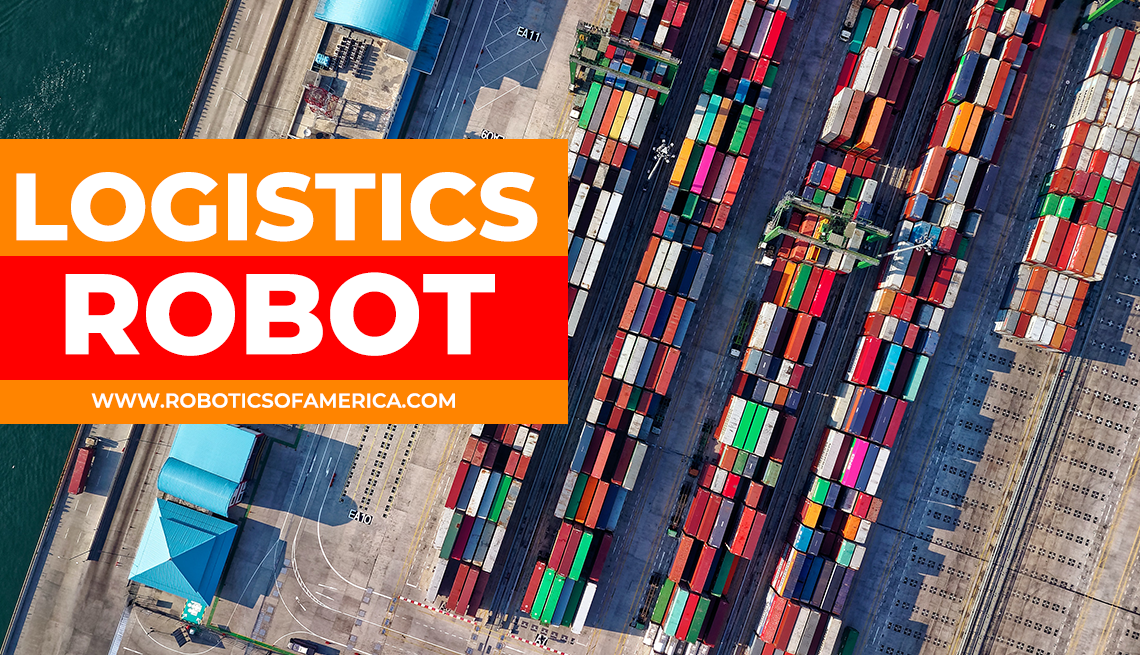
Logistics Robots of the Present & Future
Sure, logistics robots are going to impact the future of many companies. But they are already influencing the present-day business landscape. What is the purpose of these robots? They use automation processes to move and store goods. This leads to a lot of supply chain benefits. Many storage facilities and warehouses feature logistics robots. This is due to the bots' abilities to transport and organize items. This process gets referred to as “intralogistics.”
Logistics robots can function outside of warehouses and storage facilities. Companies have fallen in love with the high uptime of these machines. That uptime is much greater than manual labor. And it creates better profits and significant boosts in productivity. More and more logistics robots are getting sold every year. The sales numbers between 2016 and 2017 saw a 162% increase. Expect to see that same percentage jump from this year to next year. By 2022, well over 500,000 logistics robots will have gotten sold. Are you ready to learn more about logistics robots? Let’s keep going.
What Are Most Logistics Robots Used For?
There is two forms of logistics robots that are the most popular amongst all industries:
- Mobile AGVs in warehouses that transport goods. (AGV stands for automated guided vehicles.)
- Mobile AGVs in storage facilities that transport goods.
These robots are able to function using pre-defined pathways. This means that they can move goods for storage and shipping. Unlike humans, robots do not need to rest. They are working almost 24 hours per day. Their consistent work leads to a reduction in logistics costs. Another key benefit is that supply chains get streamlined.
There are other popular forms of logistics robots. Here are some other versions of the bots that many companies depend on:
- Robotic arms that grab goods off of assembly lines and bins. The arms then sort through the goods.
- Mobile outdoor AGVs that move goods outdoors. This logistics robot is becoming popular across the agriculture sectors.
- Mobile retail robots. These get used to counting a company’s inventory in real-time. In other words, a store turns into a miniature warehouse.
- Medicine delivery robots. These transport lab specimens and medication to labs and hospitals.
The deployment of each logistics robot varies. It all comes down to what actions the robot’s company is in need of. But most logistics robots are mobile and have great automation for goods-transportation. Once again, their main selling point to companies is their high uptime.
That uptime is an organization’s secret weapon to huge profits. More and more companies are realizing the benefits of these machines. That is why you should expect extreme market growth to take place.
Logistics Robots Have Improved Over the Years
Logistics robots were far from perfect when they first launched. But their programming and automation have seen major improvements. This is due to leaps in technology that have made the robots easier to build. Robots used to only get used when a company had a very dangerous task. Or, if a company had a task that was very boring. For example, painting the doors of cars in a factory.
The logistics robot of today offers very precise movements. This is thanks to its state-of-the-art software. What is the end-result of these technological advancements? Industries of all kinds are finding plenty of use for logistics robots. As technology improves, more robots (and robotic parts) get sold. This leads to a competitive pricing structure that benefits companies.
Self-Driving Cars: An Example of Logistics Robots
That’s right- self-driving cars are are a form of logistics robots. And these bots are going to change business (and the world) as we know it. Developments in logistical automation have made many futuristic concepts a reality. And self-driving cars are one of those concepts. The cars are one of the many benefits of automation that society sill soon witness. In fact, below are some specific benefits of self-driving logistics robots:
- Safety will improve. self-driving cars can make adjustments based on road conditions. If an obstacle is in the way, the car can adjust within milliseconds. And it can do so with more precision than any human possesses.
- A boost inefficiency. Self-driving cars use vehicle-to-vehicle communication. What does this mean? A vehicle’s movement gets optimized. This leads to many benefits such as safe driving at high speeds and conveying. Not to mention, this will also save companies a lot of money. How so? Every company’s entire carbon footprint will get reduced.
- Dual-tasking. What is dual-tasking? It is when a robot takes over any operation that a human is doing. This means logistics robots can take part in driver dual-tasking. That tasking will allow for humans to work on other tasks while inside their cars. This will help many people get work done faster.
Benefits like these are going to lead to major growth in the logistics robot industry.
The Future of Logistics Robots
Sure logistics robots are already making a splash. But their biggest splash is yet to come. Analysts expect the sector to experience tons of growth in the coming years. Logistics technology will soon become a major part of every society on the planet. Below are some logistics applications that will grow in the next few years:
1) Outdoor application logistics robots.
Current self-driving logistics robot vehicles do not focus on outdoor environments. They focus on indoor environments. An example of a closed-course location is warehouse. A factory is another example. But in the future, expect to see plenty of logistics robots outside. They are going to appear in many yards, airports, and ports. What will the main focus of outdoor logistics robots be? To boost worker safety and reduce busy congestion.
2) Conveying logistics robots.
Convoying logistics robots serve the needs of trucking transportation companies. What is conveying? It is when there is a line of vehicles on the road. A human operates the first vehicle in the line. But the rest of the vehicles are self-driven. Logistics robot technology allows other vehicles to follow along. Coupling and decoupling can occur whenever it's needed. Expect to witness convoying along your local highways very soon.
3) Logistics robots that provide last-mile package shipments.
Sure, many self-driving logistics robot cars get designed to operate on highways. But soon, delivery companies will be able to use aerial robots. These are sometimes referred to as terrestrial robots. A company like DHL can then transport shipments through the skies. This means that someday your incoming Amazon packages might float through the air.
4) Internal logistics robots.
Have you ever heard of the TUG logistics robot? If not, don't let anyone tell you that it’s a car. Because it is not. Instead, it is an autonomous mobile robot. A robot like this gets powered by internal logistics software. This enables robots to do order picking and provide material deliveries. What is one main advantage of internal logistic robots? They are flexible. In fact, they are much more flexible than standard conveyor systems. This allows human workers to focus on other tasks. Internal logistics robots will take care of low-value tasks. This is so human workers can take care of their higher-value job duties.
Keep in mind that the previous four logistics robots are still in development. This means that there is no guarantee that they will be able to carry out all these actions. But robotics experts believe these tasks can very much become a reality. Say that robot logistics technology continues to advance at the rate it is. This means that robots will soon take care of the following four key factors:
- The popularity of logistics robots will reduce labor costs. This will occur regardless of the industry.
- Logistics robots will take care of tasks that humans do not want to do.
- Logistics robots will do their tasks with better precision than humans. This also applies to time principles.
- The popularity of logistics robots will make complex supply chains simpler. The use of these robots will also lead to more networks getting connected.
Conclusion: Both Now & in the Future, Logistics Robots Are the Answer
As you can see, logistics robots can solve many problems for companies. Their tireless, 24/7 work leads to boosted profits and ROI. Expect the development of these machines to pick up in the coming years. Before you know it, you’ll even see these robots flying across the skies. Do you want to learn more about how logistics robots benefit businesses? If so, please continue to browse our website. Our firm's mission is to help companies make more money by using robotics. We will soon release more articles on topics such as these:
- -logistic robots factorio
- -logistics robotics companies
- -robotics and automation in logistics
- -robot-o logistics
- -warehouse robots
- -robotics in logistics DHL
- -logistics robotics market
- -companies using robotics in logistics

